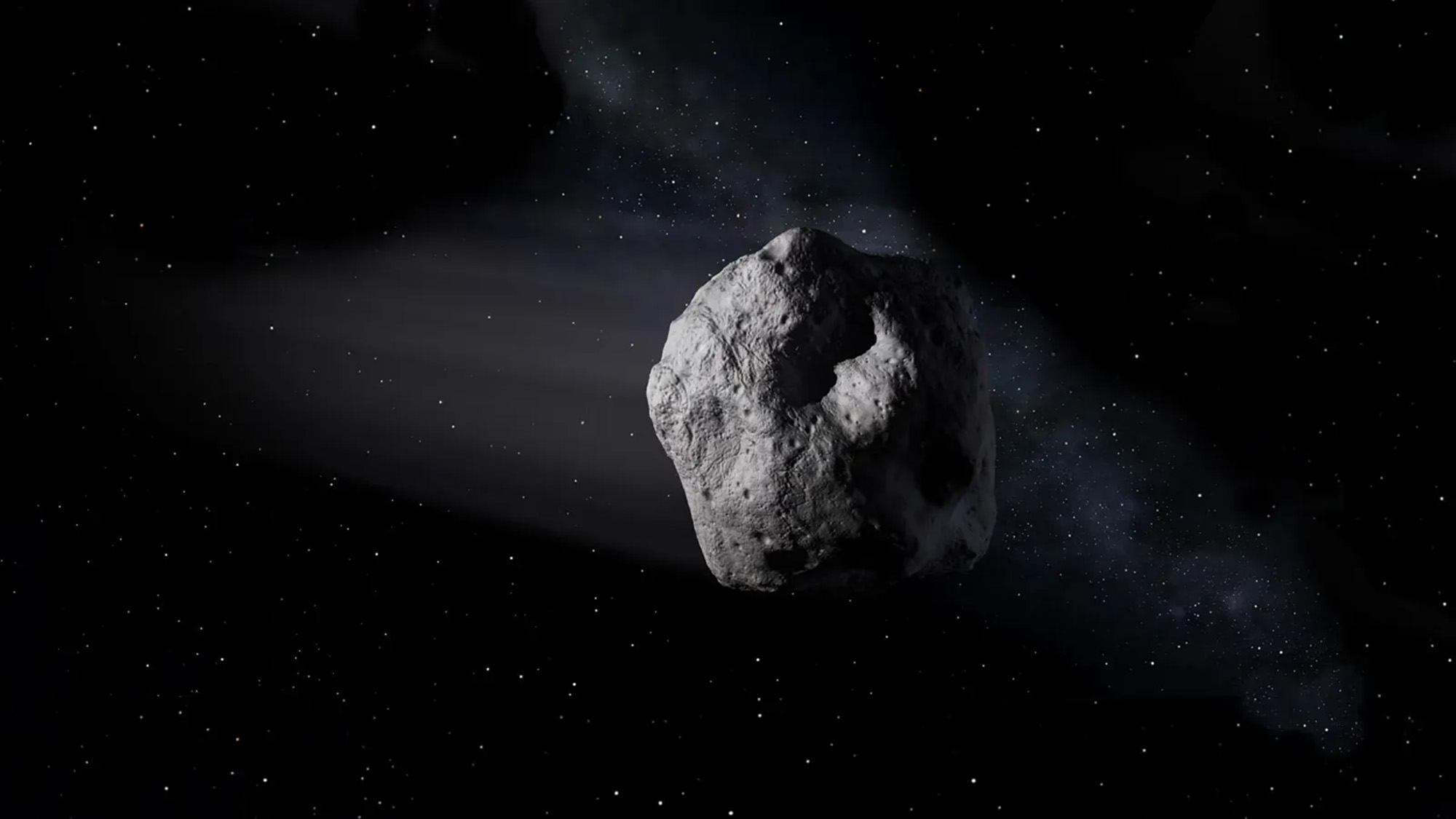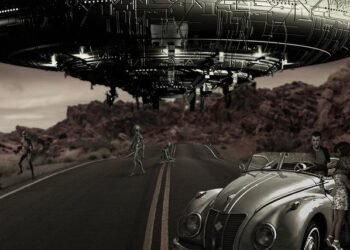
This artist’s concept depicts an asteroid drifting through space. Many such objects frequently pass Earth. To help prepare for the discovery of one with a chance of impacting our planet, NASA leads regular exercises to figure out how the international community could respond to such a threat. Credit: NASA/JPL-Caltech / Text: NASA
There are a bafflingly large number of asteroids floating around the solar system. Humans have already counted at least 1.4 million of them—and there are most likely more we haven’t seen yet.
Most of the asteroids we’ve observed orbit in the solar system’s main asteroid belt between Mars and Jupiter, but a good chunk of them—known as Near Earth Objects or NEOs—have orbits that cross Earth’s path around the sun. Some of those NEOs may eventually hit Earth, with effects ranging from a pleasant pretty meteor shower to the extinction of an entire species (sorry, dinosaurs).
Even though there are a lot of asteroids out there, space is also mind bogglingly big. So how often do these asteroids actually get close to our planet?
The short answer: it depends on the size of the asteroid. Just like smaller earthquakes happen more often than The Big One, little asteroids pass by us more often than catastrophically large hunks of rock.

According to asteroid expert and MIT professor Richard Binzel, Earth encounters over ten tons of dust every day. That’s almost twenty grizzly bears worth of dust hitting Earth, every single day. These tiny specks of dust can’t hurt us though—they simply burn up in Earth’s atmosphere, leading to the kind of meteors you might make a wish on. (And if you want to catch a glimpse of some of these, the upcoming annual Perseid meteor shower is an excellent chance to see them!)
Moving up in scale, marble to bowling ball sized rocks “are swept up a few times each day, creating bright streaks we call bolides,” explains Binzel. “When you get to sizes of a few beach balls, those arrive many times per year and occasionally yield recoverable fragments that we call meteorites.”
Semi-truck sized objects hit Earth only two to three times per century, and—lucky for humans—most of those impacts happen over the ocean because about 71% of Earth’s surface is covered by water. One of these did enter Earth’s atmosphere fairly recently, over Chelyabinsk, Russia in 2013. It exploded a few miles above the surface, but the shock was still powerful enough to break some windows. An asteroid about twice the size of the Chelyabinsk meteor exploded over a different part of Russia in 1908, known as the Tunguska event, flattening an entire forest.
The biggest asteroids—those over 140 meters across, like the size of the Washington monument—are the rarest. “In this size range, their impact would pack sufficient punch capable of creating significant local or regional damage, including tsunami risk if it struck the ocean,” says Binzel. “Fortunately these impacts are quite rare on human timescales, on average about once-per 25,000 years. That’s a probability of less than one percent per century, but still not zero over the course of a human lifetime.” Binzel says we’ve already found and tracked about 40% of the asteroids in this size range.
The asteroid that killed the dinosaurs, for comparison, was thousands of meters in diameter—an exceedingly rare occurrence. We do know of one fairly large asteroid (a bit more than 300 meters diameter) headed our way in the near future, known as Apophis. Based on observations, astronomers predict that it’ll come uncomfortably close in 2029, 2036, and 2068. Thankfully, the risk of it actually hitting Earth is quite low.

Astronomers are also on top of preparing for a potentially threatening asteroid. In fact, the NASA Double Asteroid Redirection Test (DART) mission slammed into the asteroid Dimorphos in 2022, demonstrating the technology needed to push an asteroid off a collision course.
One of the major problems for so-called “planetary protection” is identifying the threats in the first place. Just a few weeks ago, two large asteroids (2024 MK and 2011 UL21, about 150 and 2300 meters across respectively) swung by Earth’s neck of the woods. Asteroid 2024 MK, however, was only discovered just one week before it flew between the Earth and the Moon—which feels a bit worrisome.
 This illustration shows asteroid 2020 QG’s trajectory bending during its close approach to Earth. The asteroid is the closest known non-impacting asteroid ever detected. The asteroid passed by 1,830 miles (2,945 kilometers) above the southern Indian Ocean on Sunday, Aug. 16 at 12:08 a.m. EDT (Saturday, Aug. 15 at 9:08 p.m. PDT). Credit: NASA/JPL-Caltech
This illustration shows asteroid 2020 QG’s trajectory bending during its close approach to Earth. The asteroid is the closest known non-impacting asteroid ever detected. The asteroid passed by 1,830 miles (2,945 kilometers) above the southern Indian Ocean on Sunday, Aug. 16 at 12:08 a.m. EDT (Saturday, Aug. 15 at 9:08 p.m. PDT). Credit: NASA/JPL-Caltech
Discovering all the small bits of rock flying about the solar system is a difficult task. “Earth, and telescopes on it, are a constantly moving platform in our orbit around the sun. Asteroids are orbiting too, and to be spotted the asteroid has to be swinging by on the night side of the Earth in a direction a telescope happens to be pointed,” explains Binzel. “Sometimes the timing of the two orbital dances don’t line up favorably for many decades.”
To find as many asteroids as possible, we need large telescopes and cameras looking at a large portion of the sky, over and over again every night. A few facilities in the works will take up this task—namely, the Vera Rubin Observatory on Earth and the NEO Surveyor satellite in space. Rubin is a large observatory currently under construction in Chile, and it’s expected to discover millions more asteroids as it scans the entire sky every three nights. NEO Surveyor is a NASA space telescope launching in 2027, specifically designed to hunt for asteroids full-time for five years in the hopes of identifying over 90% of potentially hazardous asteroids.
“I would be worried if we weren’t taking the asteroid survey challenge seriously,” adds Binzel. “But finally, NASA and its funding sources are stepping up to the adult responsibility of doing the necessary searching to make sure our asteroid future is secure.” If all goes well, astronomers will be able to confidently say whether or not any major impacts are expected in the next century—and if we find something dangerous, then perhaps it’s time to invest in DART’s successor.
>>> Read full article>>>
Copyright for syndicated content belongs to the linked Source : Popular Science – https://www.popsci.com/science/how-often-do-asteroids-hit-earth/































